"Princess Radium", Kickaway, and the Rise (and Fall) of Radium Silk
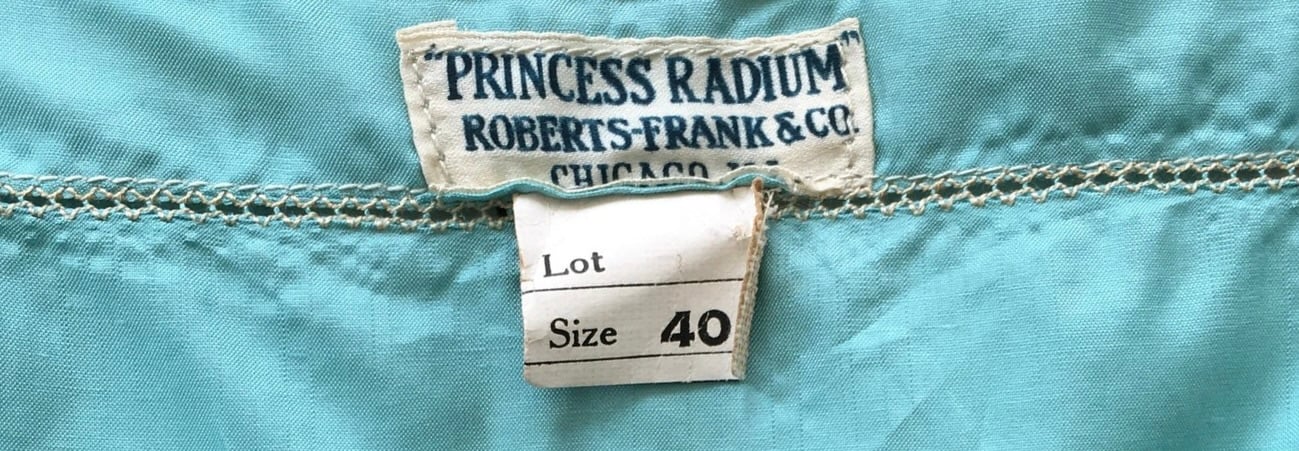
Label from a 1920s Princess Radium Step-in Teddy.
The company which became well-known women’s lingerie manufacturer Kickaway had its beginnings rooted in a deadly craze.
In 1923, two entrepreneur businessmen from Chicago, Robert and Frank S. Gershenow, decided to capitalize on the popularity of a marvelous metal called radium. At the time, radium - a highly radioactive metal whose isotopes were finally isolated by Marie and Pierre Curie in 1898 - had been touted as a cure-all for….well, just about everything. The wealthy made trips for “afternoon radium cures” to try and rid themselves of chronic illnesses such as arthritis, gout, and rheumatism. Radium water was known as the “all-natural” drink of its day. There was even talk that radium was the legitimate fountain of youth.

Radol advertisement, The Red Book.
It didn’t take long for legitimate (and not-so-legitimate) businesses to see the possibilities and hitch a ride on radium’s cures-what-ails-you coattails. Just the use of the name conjured up a sense of allure, a feeling of well-being and trust from the general public. The radioactive metal quickly became an additive in everyday products ranging from toothpaste and chocolate to suppositories, and even if it didn’t have radium as one of its ingredients its name was used to hawk every kind of product under the sun. And no, the garment industry wasn’t immune to the lure of potential profit.
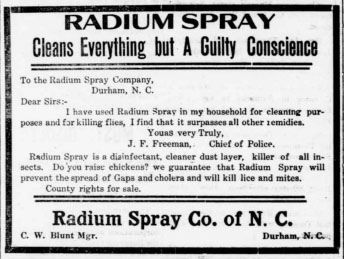
Enter the Gershenows. The two brothers, who were working for a family garment business, saw this potential and formed their own door-to-door sales company, which they called Roberts-Frank & Co., Inc. The pair took out a patent in 1923 to market underwear - children’s and ladies’ step-ins, vests, pajamas, gowns, petticoats, and ladies' athletic and novelty undergarments - under the “Princess Radium” moniker. They started selling directly to the customer and built up their sales force by advertising in trade journals like The Sample Case, and newspapers and magazines like Popular Mechanics, True Detective Mysteries, Weird Tales, Everybody’s, Pathfinder and Collier’s.
Their sales force carried trade brochures on their rounds and enticed customers with their exclusive, not-sold-in-stores designs. A few of these trade brochures still exist, and at least one is archived in the Lawrence B. Romaine Trade Catalog Collection at UC Santa Barbara.
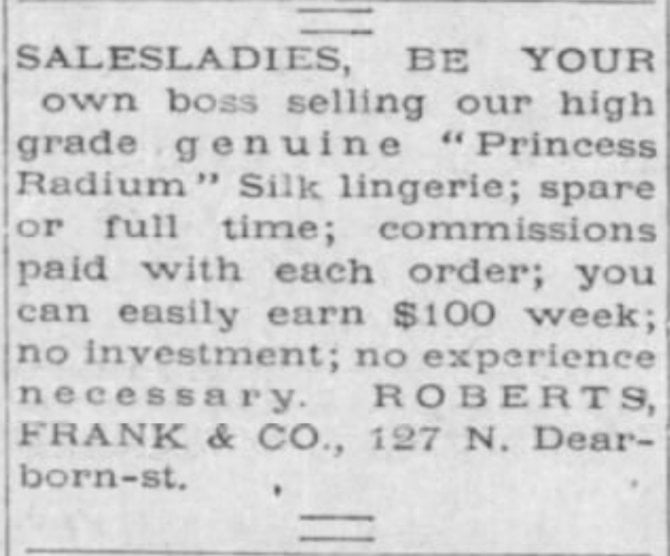
By the time Roberts-Frank began using the silk for its merchandise, the product was already a familiar one in the garment industry. Introduced around 1905 in the United States, the soft, pliable and strong silk was prized for its almost-metallic sheen and had become all the rage in Paris by 1906.
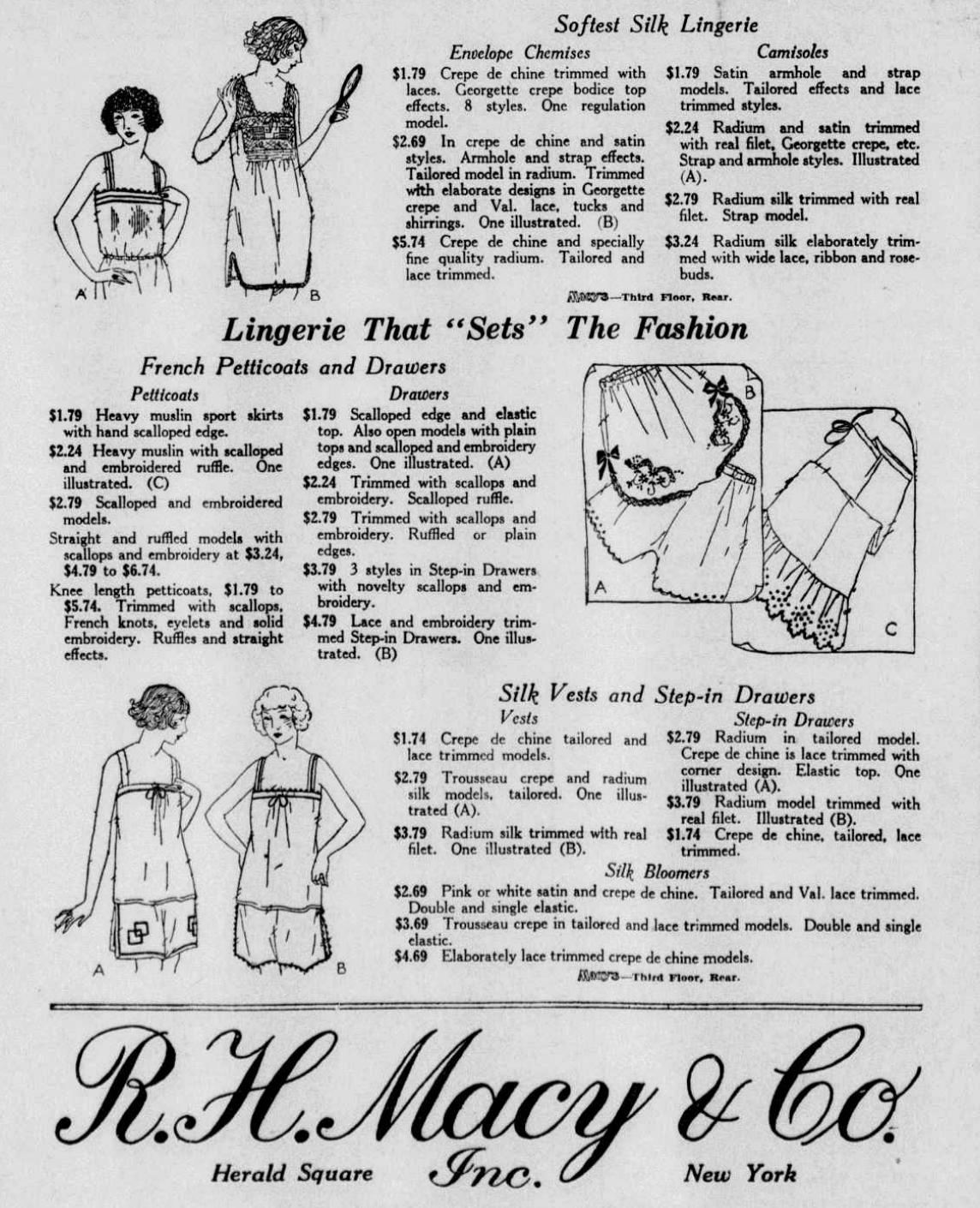
'The August Sale of White' Advertisement. The New York Herald, Sunday, August 7, 1921 (Page 24.)
And just what were the Princess Radium undergarments the company was peddling made of? Radium silk - a specially treated, opalescent luxury silk warranted to hold its shape and withstand splitting or tearing. Its iridescent sheen was caused by being woven so fine that the single threads were barely visible. Advertised as “The Silk with Nine Lives,” it was highly desirable for its suitability for shirring and tucking and could be fashioned in light or heavy weights; it was dense when used for undergarments like princess slips and bloomers, but when used for nightgowns and step-ins it was often called airy and light.
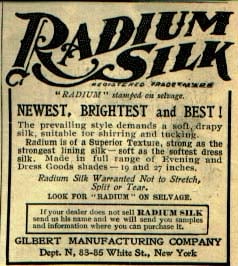
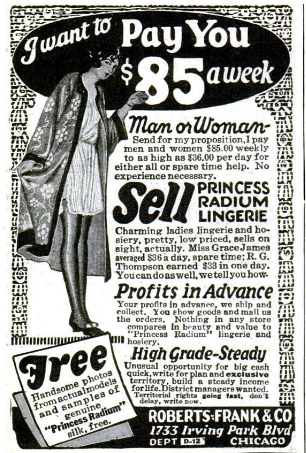
There’s not much information on how well Roberts-Frank did selling its Princess Radium products, but advertisements for its sales force didn’t last past 1926. Neither did its listing on the annual Illinois Certified List of Domestic and Foreign Corporations.
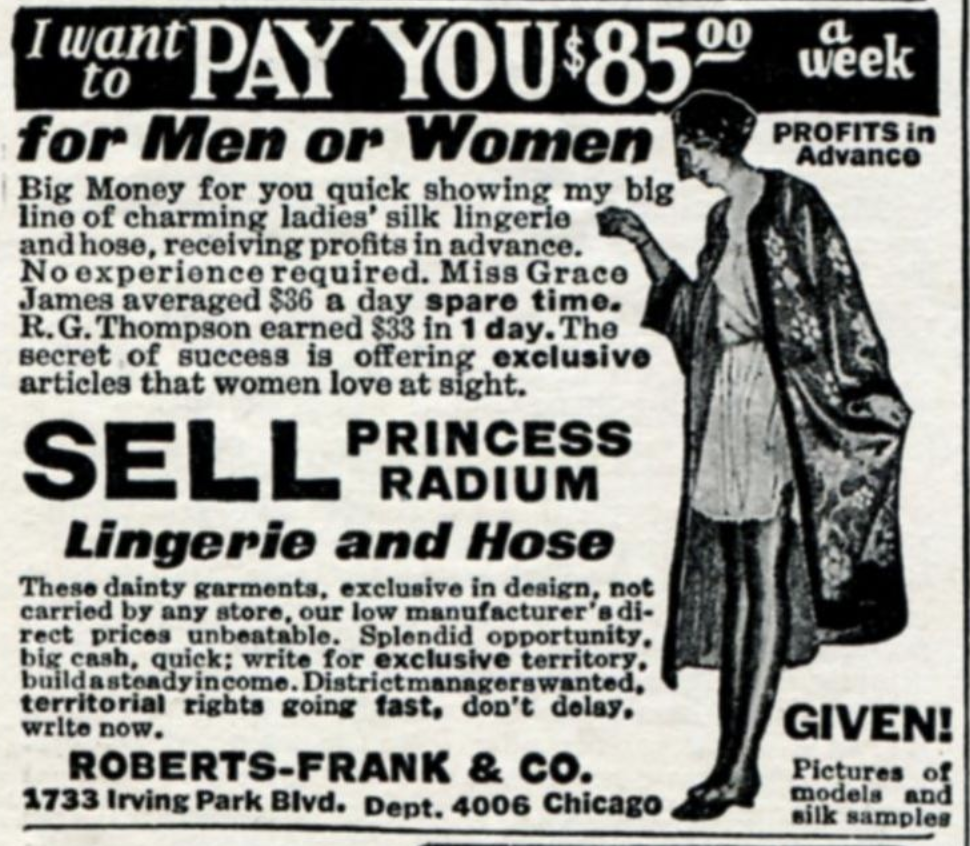
The Smart Set, 1926-06: Vol 78 Issue No. 4.
Surely there are a number of reasons why the Princess Radium venture ultimately didn’t succeed, but one of them may have been its product branding. For radium - and anything attached to its name - didn’t have much longer to bask in the “glow” of its celebrity status. It began killing people.
Since 1917, in its plants in New Jersey and Illinois, the U.S. Radium Corporation had employed women to paint its luminescent patented Undark paint onto wristwatch dials for the use of troops during World War I. The women spent their days licking brushes dipped in the radium-based paint to shape them into points small enough to apply the luminous paint to watch dials. They’d been told it was safe, but by 1922, there were indications something was horribly wrong.
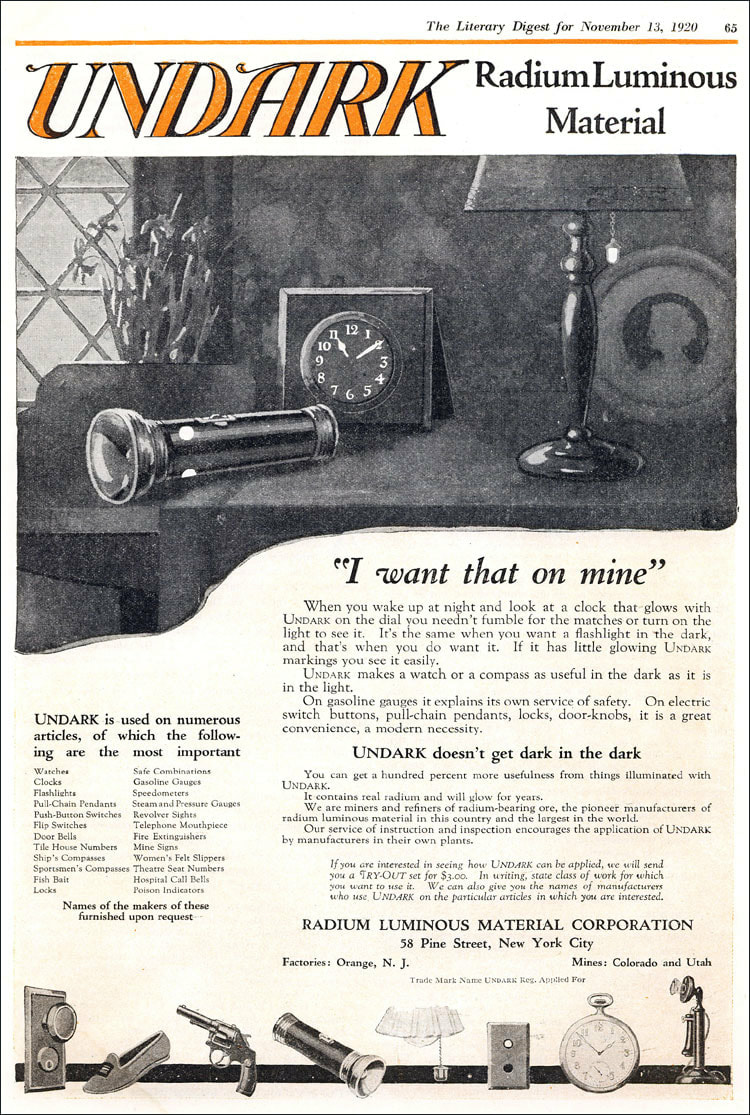
One of the workers went to her dentist with tooth pain and her jaw crumbled when he pulled her decaying tooth. She died later that year. In the subsequent years, other sickened workers brought suit against U.S. Radium. The company fought these suits tooth and nail and the entire incident labored in relative obscurity until 1928, when the women won their suits and U.S. Radium finally had to acknowledge its culpability. It was then the horrific details of what the media coined the “Radium Girls” case started to leak out to the general public.
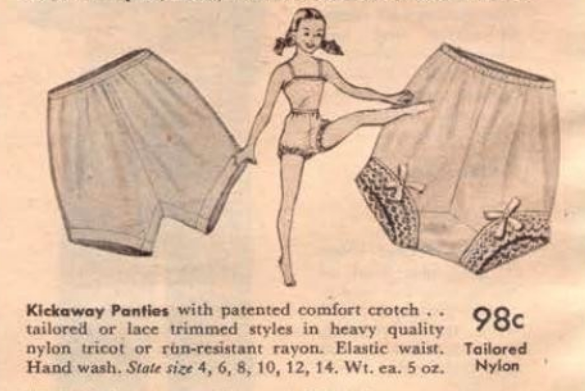
It didn’t take too long after the deadly findings about radium for retailers to start trying to distance themselves from the dangerous product. Luxury items such as "radium lingerie" began disappearing from newspaper advertisements and by the time the Great Depression was in full swing and World War II began looming on the horizon, the country’s love affair with radium had come to an end.
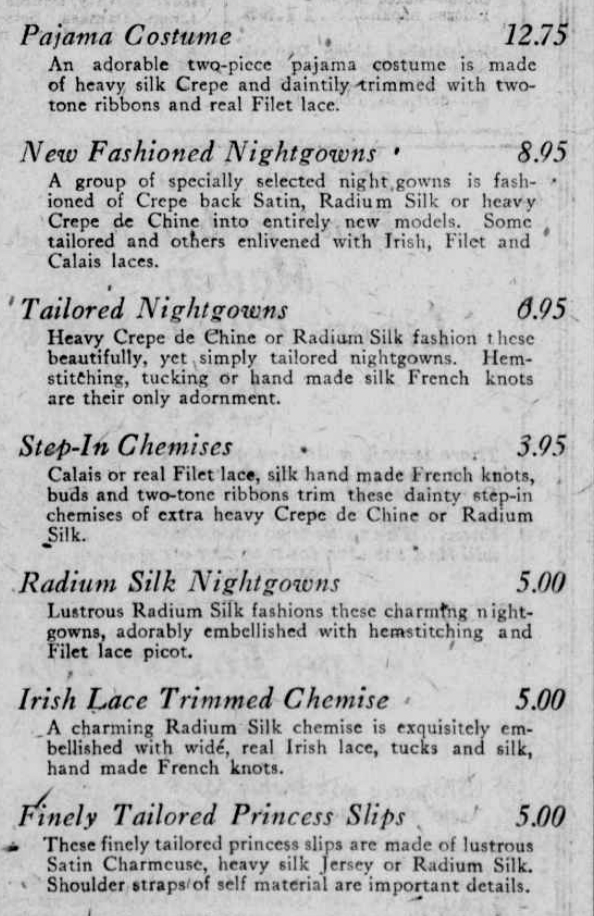
Radium Silk advertized as an option for Crepe de Chine, Stewart & Co., 5th Avenue. The New York Herald, November 26, 1922.
Luckily for Roberts-Frank & Co., Inc., the Gershenow family was already in the garment business. The boys were sons of Morris Gershenow, who had operated La Mode Garment Company in Chicago from at least 1909 until his death in 1922. The management of the company passed to eldest brother Harry, who was running the show in 1923 when Robert and Frank joined forces to create Roberts-Frank & Co. While Roberts-Frank had gambled on radium and lost, La Mode had taken out another patent on a trademark for a brand of women’s and children’s undergarments - Kickaway. It was this line which ultimately made them their fortune.
SOURCES:
"Silks." Dry Goods Reporter, Vol. 35 (Oct-Dec. 1905). Image 193. Hathi Trust.
La Fontaine, Edouard. "The Dress Of Paris." The Delineator, Vol. 67, 1906. Images 196-7. Hathi Trust. Lawrence B. Romaine Trade Catalog, UC Santa Barbara. Online Archive of California.
"For The Home Dressmaker." (2 September 1906). The Buffalo Times [Buffalo, NY], image 12. Newspapers.com.
Sheldon's Manufacturing Trade (the Cutting-up Trade): Comprising Manufacturers of Men's, Women's and Children's Garments. New York: J. S. Phelon & Co, 1909. Google Books.
The Economist: A Weekly Financial, Commercial and Real-estate Newspaper, Volume 68.Chicago: Economist Publishing Company, 1922. Google Books.
Emmerson, Louis L., compiler.Certified List of Domestic and Foreign Corporations For the Year 1924. Danville, IL: Illinois Printing Company. Google Books.
Advertisement. "Vacation Specials." (20 June 1924). The Republican News-Journal [Newkirk, OK], image 5. Newspapers.com.
"Radium Victims Awarded $50,000." (5 June 1928). Evening Independent [Massillon, OH], image 14. Newspaperarchive.com.
"Sound Tests Show Life Clicking Away in the Doomed 'Radium Women'." (25 August 1929). Butte Montana Standard [Butte, MT], image 57. Newspaperarchive.com.
Caufield, Catherine. "Dying by numbers." (28 January 1989). The Guardian [London, Greater London, England], images 86-7. Newspapers.com.
Fallon, L. Fleming. "Story of women who painted with radium a sobering one." (1 December 1999). New Castle News [New Castle, PA], image 8. Newspaperarchive.com.
Gray, Theodore. "For that Healthy Glow, Drink Radiation!" Popular Science, August 18, 2004.
Orci, Taylor. "How We Realized Putting Radium in Everything Was Not the Answer." The Atlantic, March 7, 2013.
Institut de Radioprotection et de Sûreté Nucléaire - IRSN, “The epic story of radium.” YouTube, 10:52, June 6, 2013.
Kujawa, Colleen. "Before 'raw water,' radium water was the craze - and then people died." Chicago Tribune, March 3, 2018.
Becker, Sherri. "Dental pain grew agonizing, and then deadly." (11 March 2018). The Philadelphia Inquirer [Philadelphia, PA], image 68. Newspapers.com.
Balkansky, Arlene. "Radium Girls: Living Dead Women." Library of Congress (blog post), March 19, 2019.
Stockton, Richard. "The Unbelievable True Story of America's Radium Girls." All That's Interesting, October 28, 2021.
Wikipedia. “Radioactive quackery.” Wikimedia Foundation. Last modified March 22, 2022.
